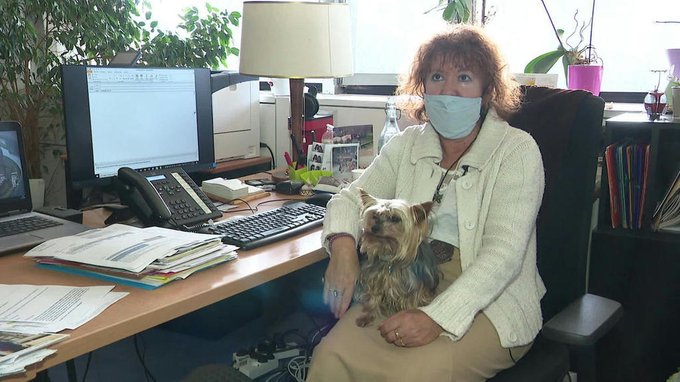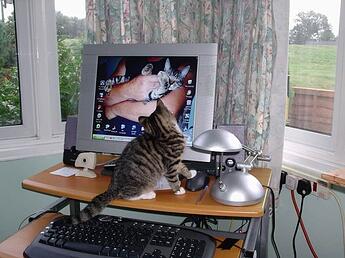
Staff at the mairie in Grenoble have found themselves in a much busier office than normal lately after dog owners were allowed to bring their pets to work.
The mairie decided to trial the idea for a year from June 25 and it looks as though the rule could become permanent due to proving popular with staff.
Four mairie staff members requested to be allowed to bring their dog to work and the rule could now be extended to all staff.
The idea was launched by Sandra Krief, the local councillor for animal causes, who said that “normalising the presence of animals in our daily lives" would improve the well-being of both pets and staff.
She told BFMTV: "I had seen that this was being done more and more abroad, particularly in the private sector, so I proposed the idea and it was well-received.”
She said that there had been some misgivings at the start, including some people who were afraid their allergies would be triggered, and some who were a little afraid of dogs, but these fears proved unfounded, she said.
She said: “The benefits of this trial are manifest, for staff and the animals.”

Canine conditions
There are some rules, which have been agreed in partnership with HR, the legal department of the mairie, animal behaviourists, and hygiene and work conditions committee le CHSCT (Comité d’hygiène, de sécurité et des conditions de travail).
Category 1 and 2 dogs, such as Rottweilers and Pitbulls, are not allowed.
Dogs cannot be fed in the workspace, and are not allowed to walk around alone. They must be kept on a lead when moving around the office, and a designated walking area has been created outside. The dog’s owners are responsible for cleaning up all and any mess created by their pets.
Ms Krief also said that “before any dogs are allowed in an office with several workers, all staff must absolutely give their formal agreement”.
Staff support
The trial has proven popular with staff in the south-east France city.
Hakim Sabri, who works in the finance department, said: “It’s very helpful. My dog Elwine is old now; she is 16, and my children no longer live at home. So this means she no longer spends every day alone at home. I feel better knowing she is here with me.”
Mr Sabri said that he brings Elwine into the office from time to time, “when I don’t have external meetings”. The dog stays in her bed next to his desk.
He said: “I’m lucky, she is very calm. She is good company, and creates a good atmosphere. She gets lots of attention all day, and has become the office mascot.”
Martine Villalta, director coordinator at the mairie, also brings her dog to work several times a week. She said: “Last Monday she was on my lap during a meeting. She was asleep and didn’t move.
“She doesn’t stop me from working. She usually sits on a little cushion in the corner of the room next to her water bowl, and she loves meeting people who come to see me during the day. It creates a convivial atmosphere, it’s nice.”
Maxence Alloto, deputy in the Commerce, Artisan and local Economy department, said that his two-and-a-half-year-old Labrador Retriever Pixel took “a little time to get used to it, but now, he knows the place well and feels at home”.
He said: “Pixel really gives us energy. It’s always nice to come back to him between meetings, and enjoy being with him while working.”
Ms Krief added: “It’s a real pleasure to share the space with them, and it gives a real sense of wellbeing in the workplace. It brings people together, and brings a certain peace.
“People are more relaxed, confident and happier when they are surrounded by animals, especially dogs. It takes down certain barriers and breaks the ice in environments that can sometimes be stressful.”
Ms Krief is hoping that making it easier for staff to bring dogs into work will also help address the growing problem of animal abandonment in France.
She said: “Many people adopted dogs during lockdown, which has meant the number of abandonments has grown over the past few months. So if it can persuade people to keep their animals [that’s only a good thing].”
P.S…but
France has one of the highest levels of animal abandonment in Europe, with more than 100,000 abandoned every year.







